Allambra, Granada, Spain
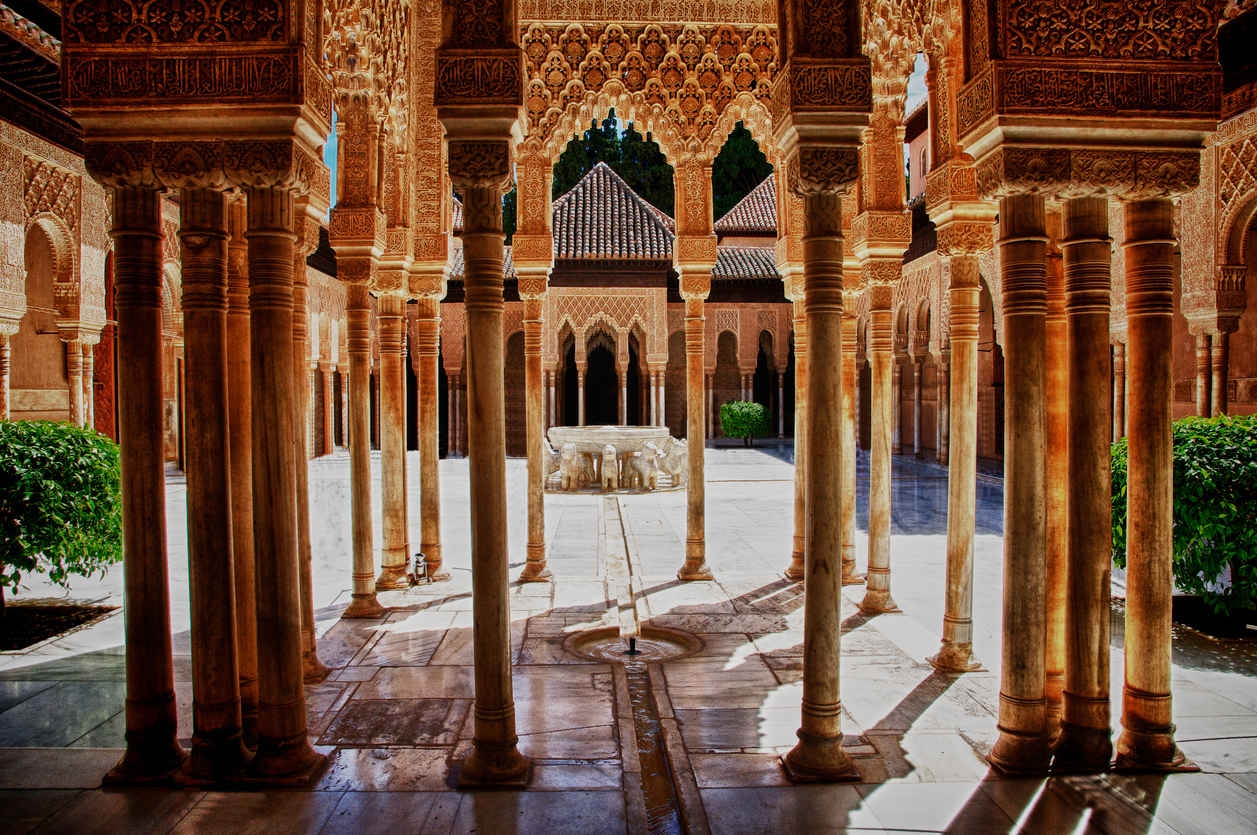
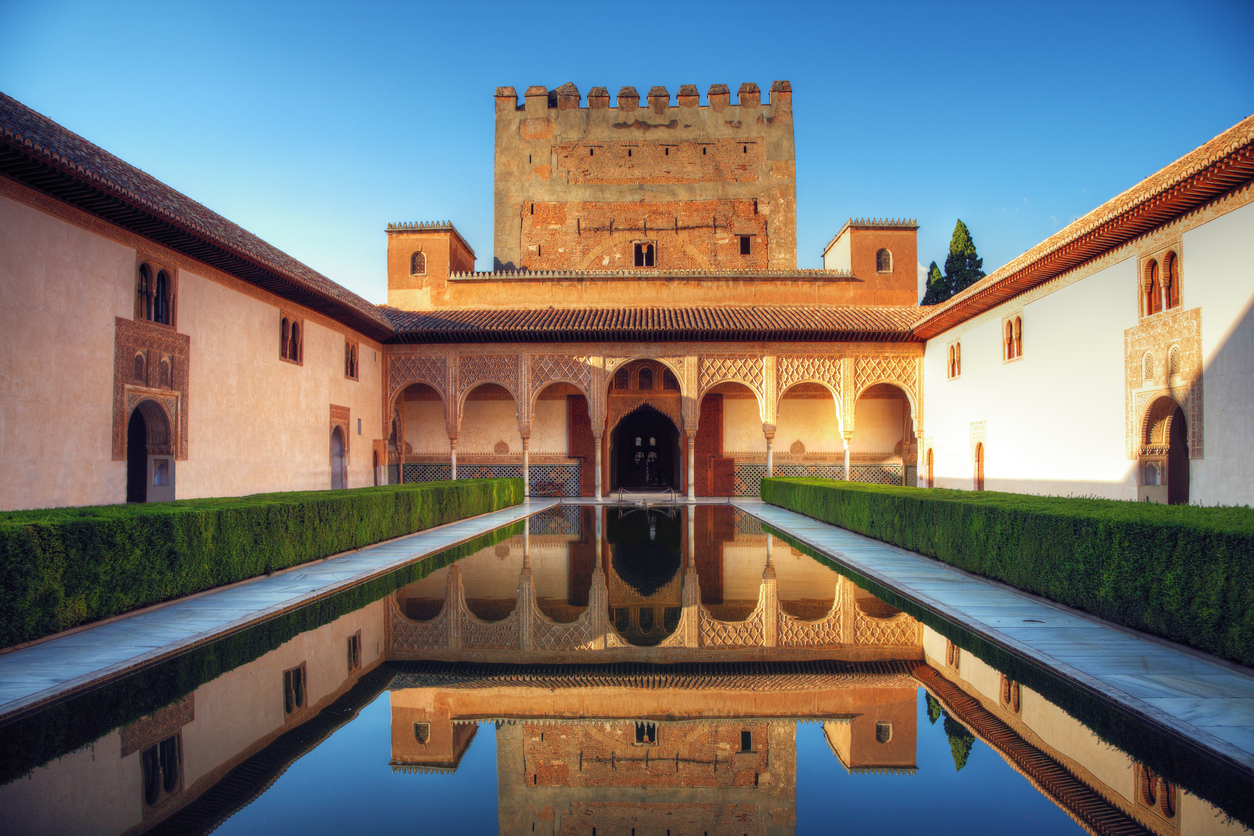
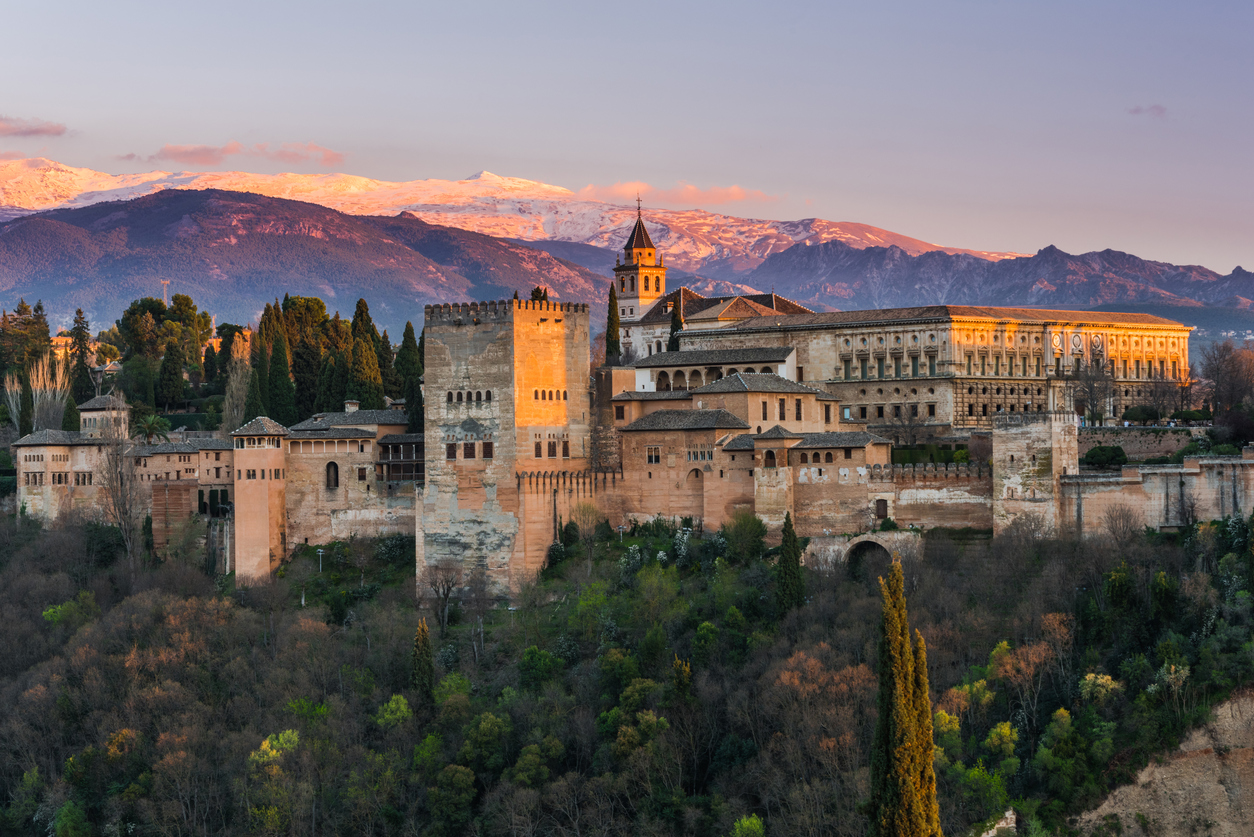

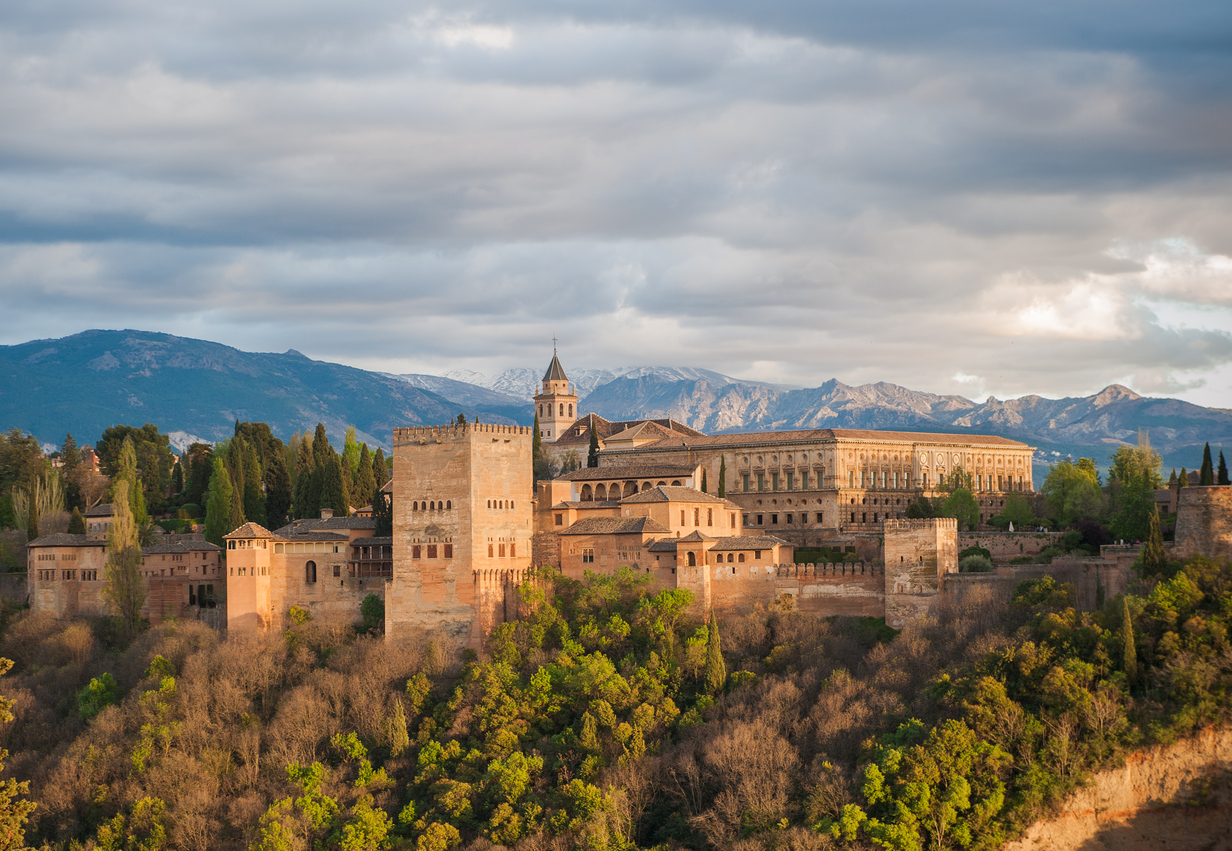
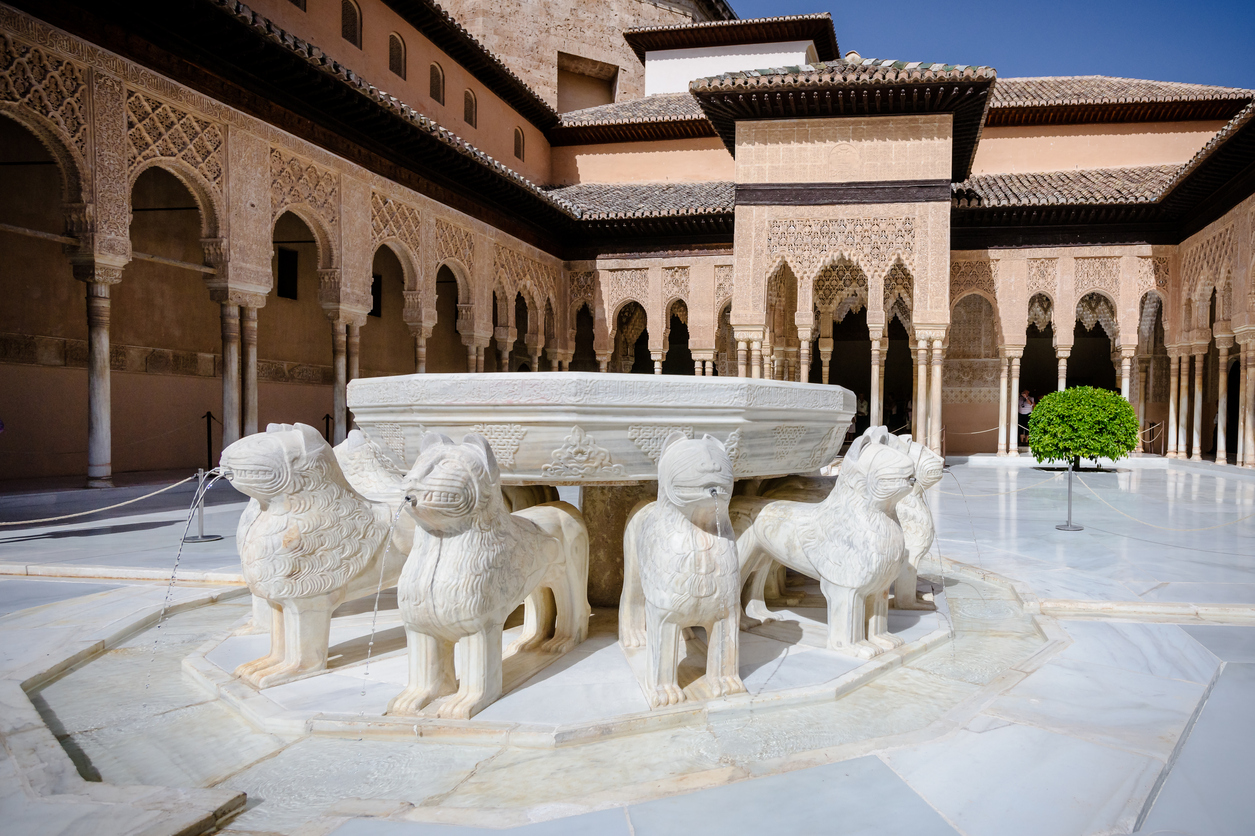
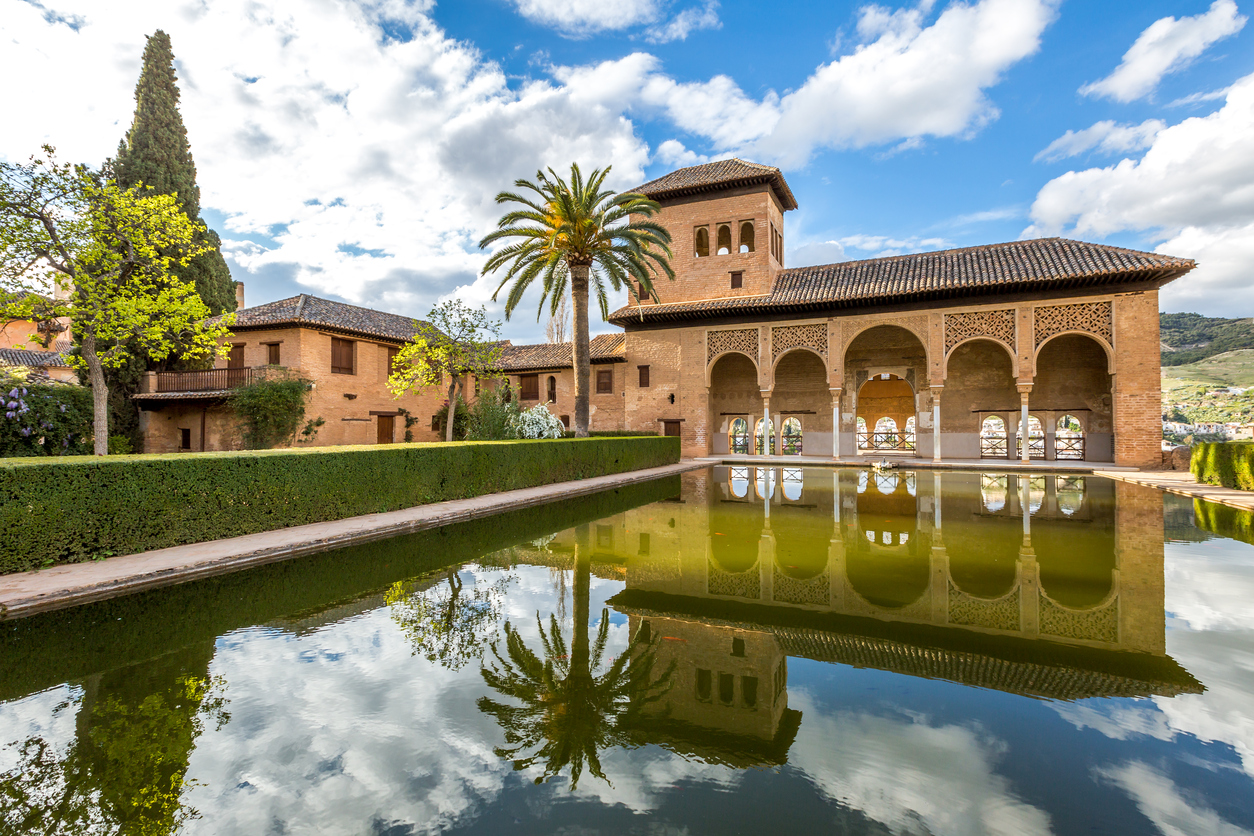
The name Alhambra comes from an Arabic root which means "red or crimson castle", the poetic version of the name is evoked by the Muslim scholars who speak of the construction of the Alhambra fortress "by the light of torches", the reflections of which gave the walls their particular coloration. Created originally for military purposes, the Alhambra was an "alcazaba" (fortress), an "alcázar" (palace) and a small "medina" (city), all in one. This triple character helps to explain many distinctive features of the monument.
There is no reference to the Alhambra as being a residence of kings until the 13th century, even though the fortress had existed since the 9th century. The first kings of Granada, the Zirites, had their castles and palaces on the hill of the Albaicin, and nothing remains of them. The Nasrites were probably the emirs who built the Alhambra, starting in 1238. Following the fall of Granada to the Catholic Monarchs in 1492, a number of structures were added to the palace
Following a period of neglect and willful damage the palace was listed as a UNESCO World Heritage site in 1984.
We recommend you buy your tickets in advance as the Nasrid Palaces may only be accessed in the hour indicated on your ticket. Buy tickets
Getting there
From the Granada Cathedral via Cuesta de Gomérez is a short 25-30 minute walk up to the Alhambra palace. The climb on this route is an easy 100 meters over 1.6km. Alternatively you can walk up via Calle San Juan de los Reyes which is a much steeper and longer climb. There is parking if you choose to drive up or you can take a bus or a taxi.


